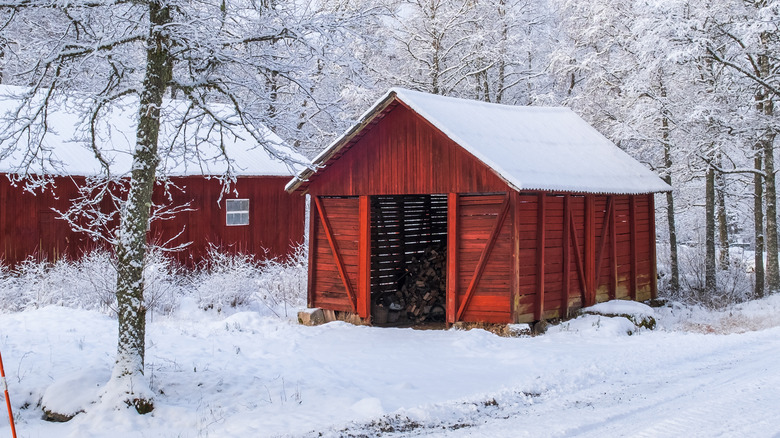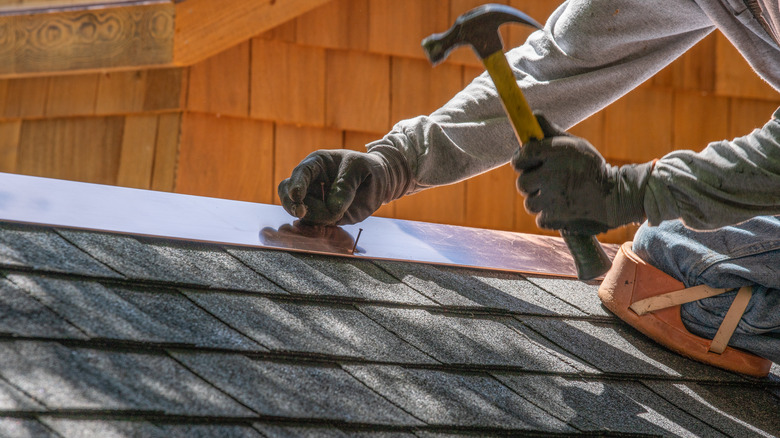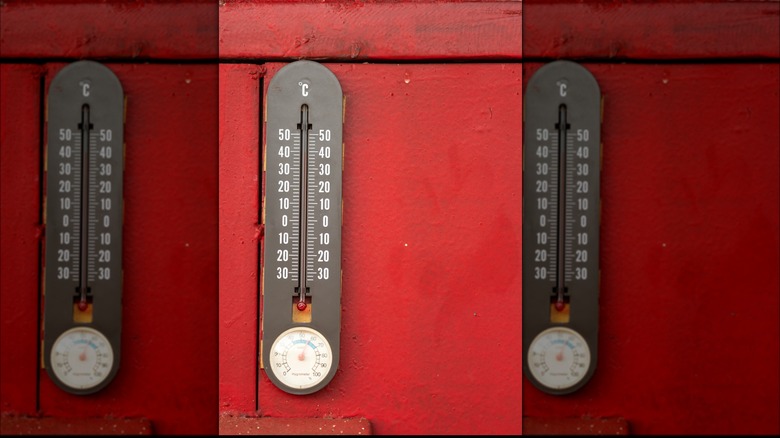The Best Way To Keep Mold Out Of Your Shed During Snowy Winters
Preparing for the tempestuously cold weather is no easy feat. You must winterize your flower beds, clean and store your gardening equipment, and weatherproof your home. Given this long checklist, it's only natural that you'd want to skimp on winter care for the storage sheds sitting unobtrusively in your backyard. However, this will cause problems like dampness, mold, and mildew. Sealing your sheds for months at a stretch is intuitive, as you're unlikely to use the tools stored in them, but it concurrently restricts all air movement, permanently trapping moisture within the four walls. Such damp conditions become breeding grounds for fungal spores, ravaging your outhouse. So, stripping your shed's innards of vapor is the best way out of this predicament.
Fortunately, you can use various tactics to lower your wooden shed's humidity levels. Storing items only after they are dry should help. Another option is to check for and plug gaps and openings across the roof, floor, windows, doors, and walls that allow the icy winds in. Remember, this doesn't imply you must cut off all airflow. Ventilating the space periodically to replace the stale air indoors is equally essential.
Keep moisture out
Since most outhouses are made from porous lumber, they're prone to absorbing water from their surroundings, paving the way for condensation and mold growth. Pressure-treating or coating the exterior walls with oil sealants should stem wood rot and spread inside when the weather turns for the worst. Usually, gravel pads, concrete pavers, or vapor barriers between the shed's foundation and the ground prevent rainwater from seeping through. But if your shed's base lacks such protection, caulk it pre-winter.
Weatherstrip your door panels and windowpanes to stop cold drafts in their tracks. You can also insulate your outhouse with rodent-resistant foam if you're worried about pesky intruders. Also, repair roof tears, especially along the siding joints, since they serve as entry pathways for moisture and pests. However, avoid storing home items in your outdoor shed, as they can absorb moisture, supporting fungal growth. Follow the same rule for perishable organic materials like stacks of newspaper or cardboard. But if there's no alternative, space the items 10 centimeters apart from each other and the walls. Moreover, keep them on a shelf rather than the floor. Further, wipe your gardening boots, lawnmowers, golf clubs, bikes, or other implements dry and wrap them in weatherproof coverings before stowing them away for the winter.
Keep humidity in check
Despite your best efforts, the air inside your outhouse might reach its dew point and condense, fueling mold and mildew development. Installing a simple hygrometer helps keep track of humidity levels. This should ideally hover between 30% and 50%. But if they exceed 50%, operate a dehumidifier or an exhaust fan to restore the previous levels. Placing silica gel packs around the damp spots might also be effective. Alternatively, you can run a tubular heater, assuming a power point is handy. It'll dry the air while keeping the shed warm, depriving spores of favorable conditions. Don't run gas heaters, as they dispense moisture, worsening the situation.
Conversely, on a dry day, brave the cold and open the shed's doors to ventilate it. It'll rid your shed of the characteristic musty odor that rooms tend to acquire when they aren't opened for a stretch. It should prevent the formation of wet spots, too. But if you can't be bothered, install louver vents on opposite walls since they keep the room dry and airy without providing any inlet to snow or rain.


